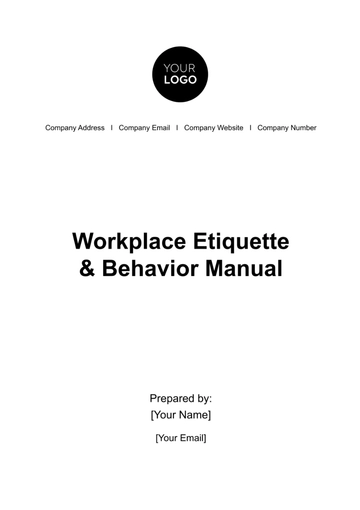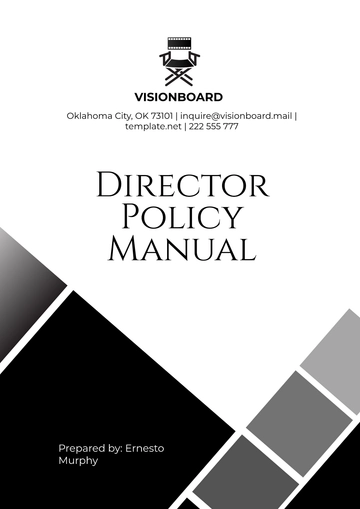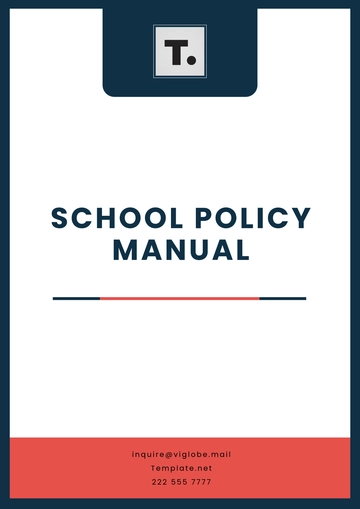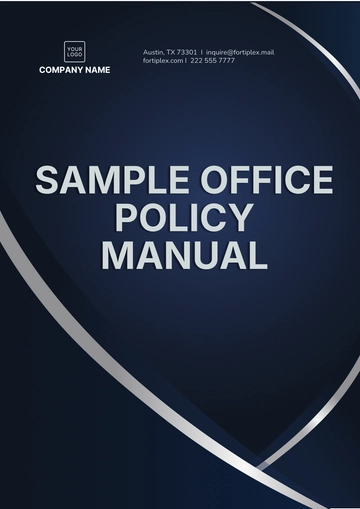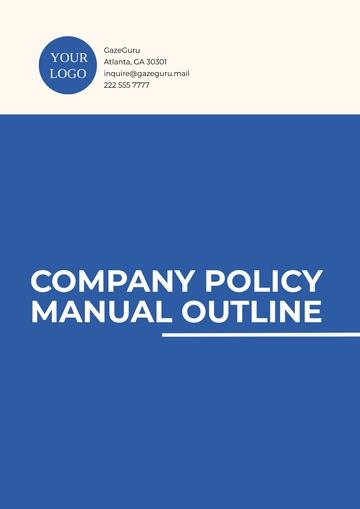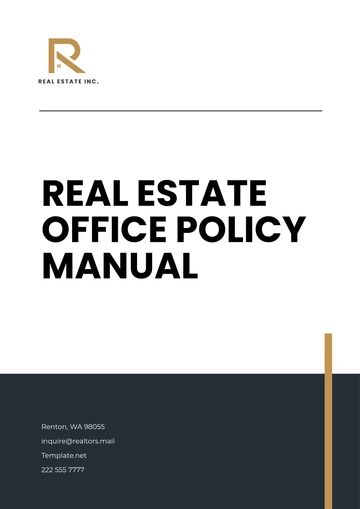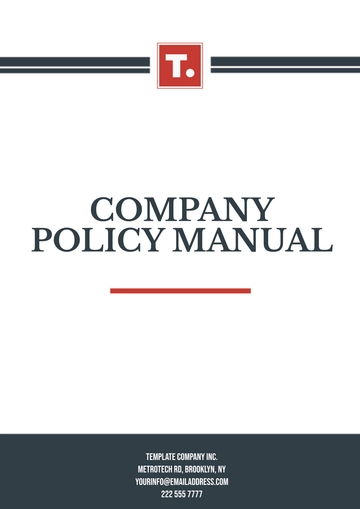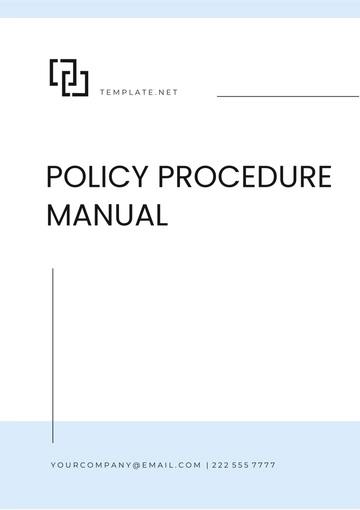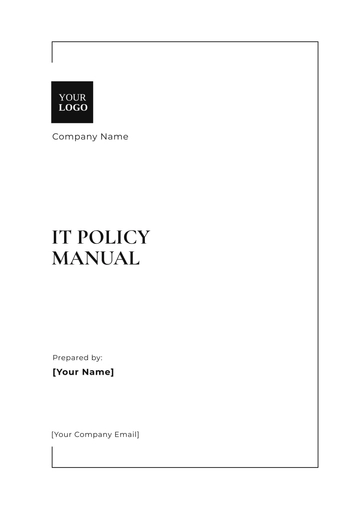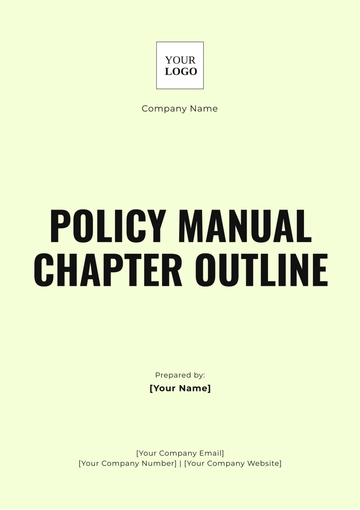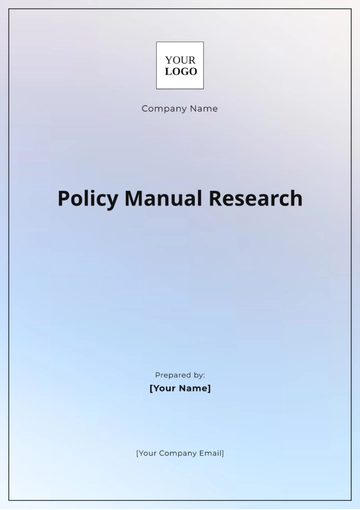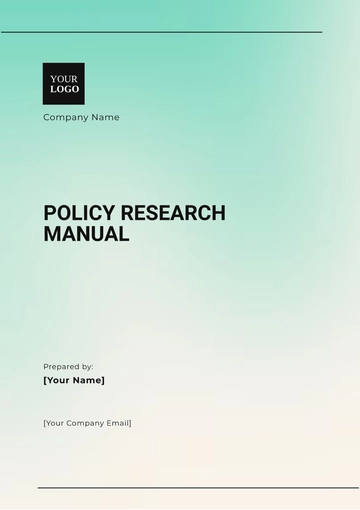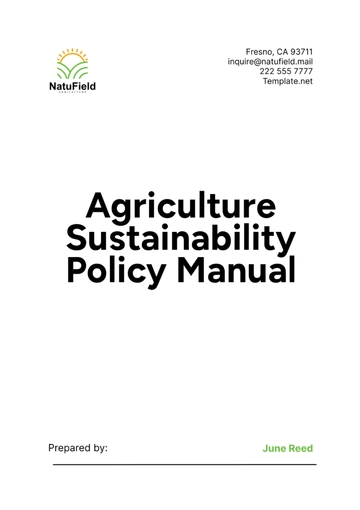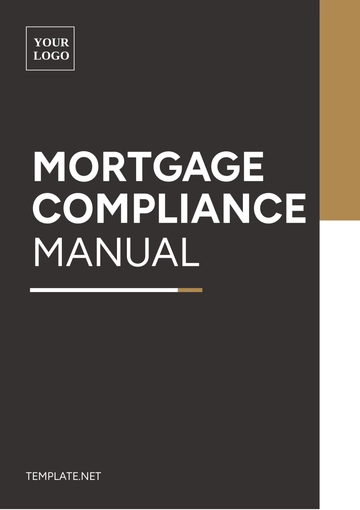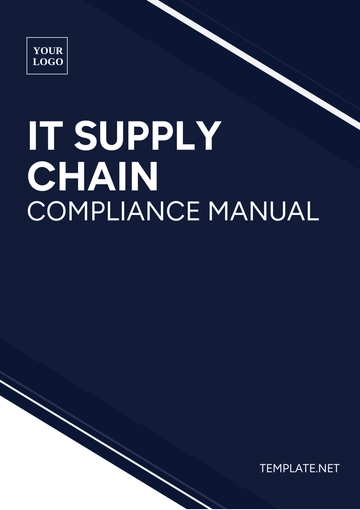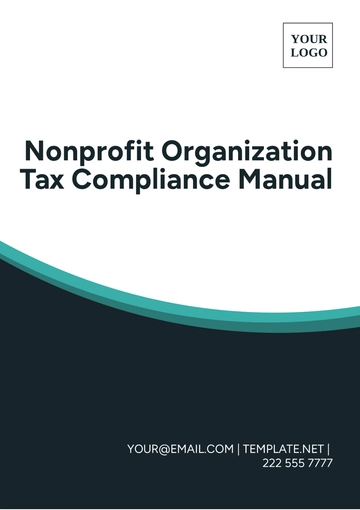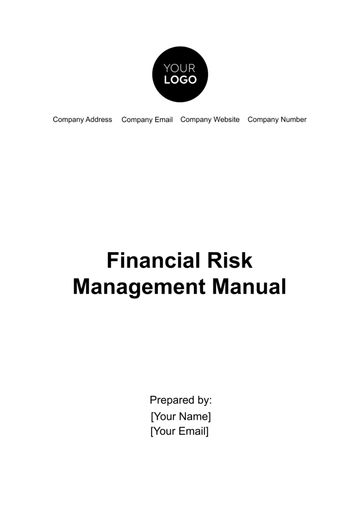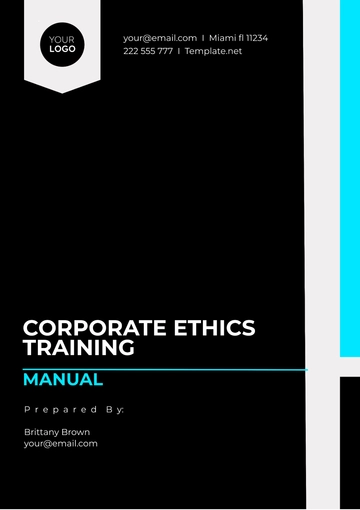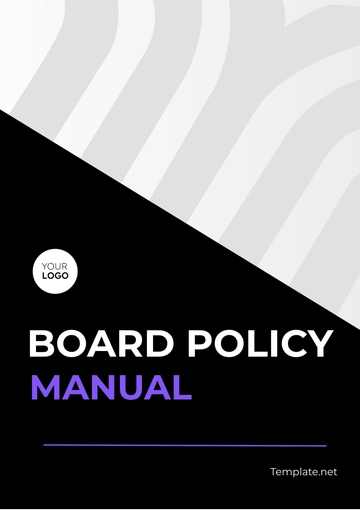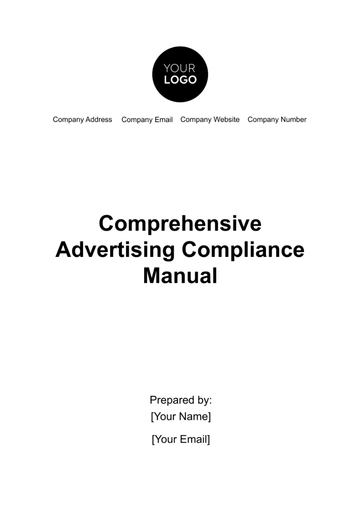Free Financial Compliance Manual
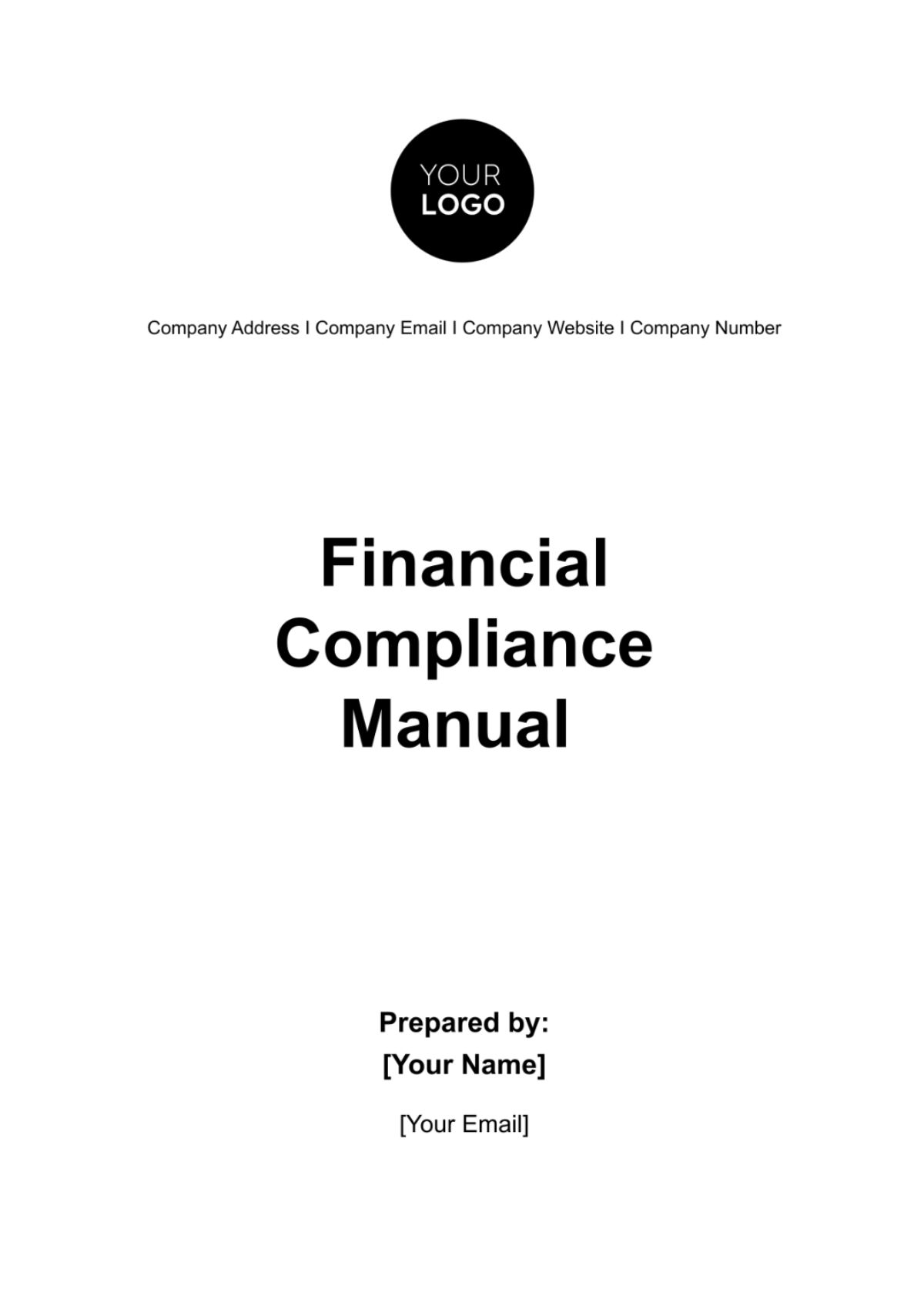
I. Introduction
Purpose of the Manual
This Financial Compliance Manual is designed to ensure that [Your Company Name] conducts its business activities in full compliance with the applicable laws, regulations, and ethical standards. It serves as a guide for our employees, management, and stakeholders to understand the financial responsibilities and ethical obligations that shape our corporate culture and business practices.
Scope and Applicability
The manual applies to all employees, officers, and directors of [Your Company Name], including all subsidiaries and affiliated companies. Compliance with these policies is mandatory and essential to our commitment to integrity, transparency, and excellence.
Overview of Financial Compliance
Financial compliance encompasses a broad range of activities and policies designed to prevent, detect, and address regulatory violations, unethical conduct, or financial mismanagement. It includes adherence to laws governing financial reporting, employee conduct, international business practices, and more.
II. Legal Framework and Regulatory Environment
Summary of Relevant Laws and Regulations
[Your Company Name] is subject to various financial and corporate regulations, including, but not limited to:
Securities Laws (e.g., Securities Act of 1933, Securities Exchange Act of 1934)
Tax Laws (e.g., Internal Revenue Code)
Employment Laws (e.g., Fair Labor Standards Act)
Anti-Corruption Laws (e.g., Foreign Corrupt Practices Act)
Industry-specific Compliance Requirements
Given [Your Company Name]'s sector in [Industry], the following additional regulations apply:
[Industry Regulation 1]: Description and implications
[Industry Regulation 2]: Description and implications
Updates and Changes in Regulations
[Your Company Name] is committed to staying informed about changes in the regulatory environment. The Compliance Officer is responsible for communicating any significant legal changes to the relevant departments and ensuring our policies and procedures are updated accordingly.
III. Organizational Policies and Procedures
Code of Conduct
[Your Company Name]’s Code of Conduct establishes the ethical and legal standards all employees are expected to adhere to in their daily operations and interactions. It serves as a guide to making decisions that align with our company’s values and legal obligations.
Integrity and Ethical Standards: All employees must conduct business with the highest level of integrity and avoid any actions that could discredit the company.
Compliance with Laws: Employees must understand and comply with all laws, rules, and regulations applicable to our business activities.
Respect in the Workplace: Promoting a culture of respect and dignity, free from harassment and discrimination.
Protecting Company Assets: Employees are responsible for the proper use, protection, and conservation of company assets and proprietary information.
Conflict of Interest Policy
Conflicts of interest can undermine the trust and integrity of [Your Company Name], and as such, employees must actively avoid situations where personal interests are in conflict with the interests of the company.
Definition and Examples: A conflict of interest occurs when an individual's private interest interferes in any way—or even appears to interfere—with the interests of the company as a whole. This could include having a significant financial interest in a competitor, customer, or supplier or taking personal advantage of corporate opportunities.
Disclosure and Approval: Employees must disclose any potential conflicts of interest to their supervisor or the Compliance Officer. The company will determine whether a proposed transaction or situation constitutes a conflict of interest and the appropriate resolution.
Financial Reporting and Documentation
Accurate and reliable financial reporting is critical to our business operations and maintaining the trust of our stakeholders. This policy outlines the standards and procedures for maintaining our financial records.
Accurate Recording: All financial transactions must be recorded promptly and accurately by appropriate accounting principles and standards.
Documentation and Approval: Supporting documentation for all transactions must be complete and accurate. All transactions require approval from the appropriate level of management.
Internal Controls: Robust internal controls are in place to ensure the accuracy and reliability of our financial reporting. These controls include segregation of duties, reconciliations, and regular internal audits.
Asset Management
The proper management and safeguarding of company assets are critical to our success and reputation. This policy provides guidelines for the effective use, protection, and maintenance of [Your Company Name]’s assets.
Physical and Intellectual Assets: This includes all company property, such as physical assets (equipment, inventory, etc.) and intellectual assets (trademarks, patents, proprietary information).
Usage and Maintenance: Employees are responsible for using assets for legitimate business purposes and maintaining them in good working condition.
Protection and Security: Measures must be taken to protect assets from loss, damage, misuse, or theft. This includes ensuring the security of physical assets and the confidentiality of sensitive information.
IV. Accounting and Record-keeping
Our financial records are maintained in accordance with generally accepted accounting principles (GAAP) and all applicable laws and regulations.
Document Retention Policy
Financial documents are retained according to the following schedule:
Documentation | Retention Period |
|---|---|
Tax Returns | 7 Years |
Employment Records | 5 Years |
Financial Statements | Permanently |
Contracts | 5 Years after Expiry |
Confidential financial information is protected by robust security measures, including encryption, access controls, and regular audits
V. Financial Controls and Operating Procedures
Authorization and Approval Processes
All expenditures, agreements, and transactions must be authorized by designated personnel. The following table outlines authorization limits and responsibilities:
Amount | Authorized By | Documentation Required |
|---|---|---|
<$1,000 | Department Head | Expense Form |
$1,000-$10,000 | VP of Finance | Purchase Order + Invoice |
>$10,000 | CEO or Board | Contract + Board Approval |
Segregation of Duties
To prevent fraud and errors, key duties are divided among different people. No single individual should control all aspects of a transaction. We identify and assess financial risks regularly and implement strategies to manage or mitigate these risks. This includes regular financial audits and contingency planning.
[Your Company Name] has zero tolerance for fraud. Any suspected fraudulent activity should be reported immediately to the Compliance Officer or through our anonymous hotline.
VI. Reporting and Monitoring
Internal Reporting Systems
Whistleblower Policy: Encourages employees to report, without fear of retaliation, any suspicious activities or violations of financial laws, regulations, or company policies. This includes any fraudulent activity, accounting discrepancies, or unethical behavior.
Reporting Channels: Details the various channels available for reporting concerns, including supervisors, the Compliance Officer, or a dedicated hotline. Confidentiality of the reporting individual is maintained to the fullest extent possible.
Investigation Protocol: Outlines the steps to be taken when a concern is reported, including initial assessment, formal investigation, and resolution. Ensures that investigations are conducted fairly, confidentially, and promptly.
External Reporting Obligations
Regulatory Compliance: Describes the specific financial reporting requirements imposed by external regulatory bodies and the schedule for such reporting. This may include annual reports, tax filings, and disclosures to financial regulatory agencies.
Stakeholder Communication: Outlines the policies for communicating financial information to stakeholders, including shareholders, customers, and the public. Ensures that all communications are accurate, transparent, and timely.
Monitoring and Auditing Practices
Internal Audits: Regular internal audits are conducted to assess compliance with financial laws, regulations, and company policies. Describes the scope, frequency, and methodology of audits.
External Audits: Details the engagement and cooperation with external auditors for required annual audits or investigations. Explains how findings from external audits are addressed.
Continuous Improvement: Describes the process for using findings from reports and audits to make continuous improvements in financial processes and controls. Encourages a culture of learning and adaptation.
VII. Training and Education
To ensure that all employees understand their compliance responsibilities and the relevant financial laws and regulations, [Your Company Name] commits to ongoing training and education.
Training Programs for Employees
Initial Training: All new employees receive training on this Financial Compliance Manual as part of their onboarding process. This training covers key compliance concepts, policies, and procedures.
Regular Updates: Employees receive regular training updates, particularly when there are changes to financial laws, regulations, or company policies. Training methods may include workshops, e-learning modules, and newsletters.
Continuing Education and Updates
Professional Development: Encourages and supports employees, especially those in finance and management roles, to pursue relevant professional development opportunities. This might include industry conferences, seminars, or courses related to financial compliance and ethics.
Certification Programs: Supports employees in obtaining relevant compliance or industry-specific certifications, recognizing the importance of specialized knowledge in maintaining the highest standards of financial conduct.
Certification and Compliance Verification
Annual Certification: Requires employees to certify annually that they have read, understand, and agree to adhere to the Financial Compliance Manual. This process reinforces the importance of compliance and ensures accountability.
Compliance Audits: Regular compliance audits are conducted to verify adherence to training requirements and the effectiveness of the training programs.
VIII. Enforcement and Disciplinary Actions
Ensuring that violations of the Financial Compliance Manual are addressed promptly and appropriately is essential to maintaining the integrity of [Your Company Name]'s financial operations.
Violation Reporting Mechanisms
Accessibility: Ensures that employees know how and where to report violations of financial policies or unethical behavior.
Protection: Reiterates the protection for individuals reporting violations, emphasizing the company's non-retaliation policy.
Investigation Procedures
Steps of Investigation: Outlines the step-by-step process for investigating reported violations, including initial assessment, evidence collection, interviews, and conclusion.
Fairness and Confidentiality: Ensures that all investigations are conducted fairly, respecting the rights of all individuals involved, and maintaining confidentiality throughout the investigation process.
Disciplinary Measures and Sanctions
Range of Disciplinary Actions: Specifies the range of potential disciplinary actions that may be taken in response to policy violations, including verbal warnings, formal reprimands, suspension, and termination.
Proportionality and Consistency: Ensures that disciplinary measures are proportional to the severity of the violation and are applied consistently across the organization.
IX. Review and Update of Compliance Manual
To ensure that the Financial Compliance Manual remains up-to-date and relevant, [Your Company Name] commits to regularly reviewing and updating its content.
Regular Review Schedule
Annual Review: The Compliance Manual is reviewed at least annually to ensure that it reflects current laws, regulations, and best practices.
Ad-hoc Updates: In addition to the scheduled reviews, the manual is updated as needed in response to significant regulatory changes or internal policy adjustments.
Process for Updating Procedures and Policies
Responsibility: Assigns responsibility for initiating reviews and updates to the Compliance Officer or a dedicated committee.
Stakeholder Input: Encourages input from various stakeholders, including legal advisors, auditors, and department heads, to ensure comprehensive and practical updates.
Feedback and Continuous Improvement
Employee Feedback: Encourages employees to provide feedback on the manual's effectiveness and suggest areas for improvement.
Implementation of Changes: Details the process for implementing changes to the manual, including communication of updates and additional training if necessary.
- 100% Customizable, free editor
- Access 1 Million+ Templates, photo’s & graphics
- Download or share as a template
- Click and replace photos, graphics, text, backgrounds
- Resize, crop, AI write & more
- Access advanced editor
Introducing the Financial Compliance Manual Template from Template.net: a professional, editable, and customizable solution for maintaining financial regulatory standards. Crafted for precision and compliance, this template simplifies adherence to complex financial regulations, ensuring thorough and compliant financial practices. This template is editable with our Ai Editor Tool exclusively in Template.net.


